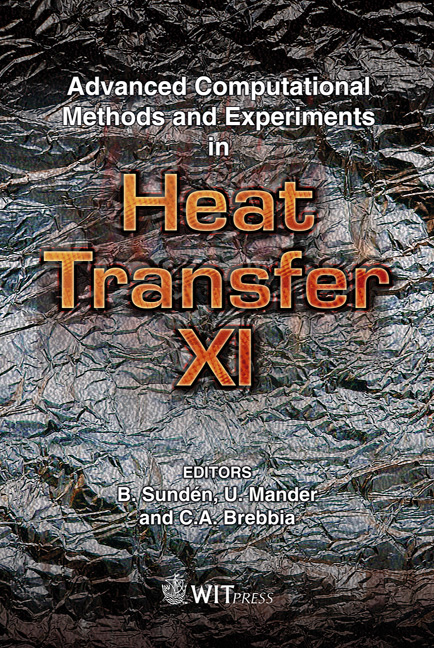On Numerical Simulations Of Flow And Heat Transfer Of The Bend Part Of A U-duct
Price
Free (open access)
Transaction
Volume
68
Pages
9
Page Range
167 - 175
Published
2010
Size
3,146 kb
Paper DOI
10.2495/HT100151
Copyright
WIT Press
Author(s)
T. Salameh & B. Sundén
Abstract
Two dimensional numerical simulations of the flow and temperature fields inside the bend (turn) part of a U duct have been performed. Both the standard and low Reynolds number k- models were used to solve the smooth bend (turn) part and ribbed bend (turn) part, respectively. For the standard k- model, the wall function approach was used at the near wall region where the log-law was assumed to be valid, whereas the modelling damping functions were used in the low Reynolds number model. In the case of the ribbed bend (turn) part, two approaches were used, the total approach and an approach based on periodic flow condition. The details of the duct geometry were as follows: the cross section area of the straight part is 5050 mm2, the inside length of the bend part 240 mm, the cross section area of the rib is 55 mm2 and the rib height-tohydraulic diameter ratio, e/Dh, is 0.1. The results are compared with experimental data obtained for the same conditions. Keywords: smooth and ribbed bend part, standard k-ε, low Reynold number k-ε, periodic flow condition. 1 Introduction Roughness elements (ribs or turbulators) are used to enhance the heat transfer level in the cooling passage where the cooling is required. The ribs enhance the heat transfer process by restarting the boundary layer after flow reattachment between ribs as shown in Fig. 1.
Keywords
smooth and ribbed bend part, standard k-ε, low Reynold number k-ε, periodic flow condition





